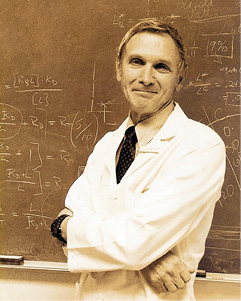In this series, we introduced our Guidelines for Conscientious and Inclusive Description project. We then delved into the topics of identifying creators, adding context, and addressing outdated language. In this final blog post, I’ll talk about making our description accessible. Read Part I, Part II, Part III, and Part IV.
At the Center for the History of Medicine, most of our users are academic researchers. But our goal is to make our description accessible to as wide a range of people as possible. We want to make our finding aids easy to read and understand for people who may not have a background in medicine or academia, or those who may be new to archival research. Avoiding unnecessarily complex language and structure benefits all users. With that in mind, we included the following accessibility-oriented practices in our Guidelines:
- Describe collections using language that is accessible to a wide variety of potential users. Consider those outside of the medical or academic communities and those who are novice archives users (A4BLIP).
- Use clear and direct language. Whenever possible, avoid complicated phrases and jargon, and long sentences and paragraphs. Use common language to clarify terminology that might be inaccessible.
- Use simple and straightforward formatting. Use a bulleted list in cases where it would be easier to read and understand than a block of text.
The following examples illustrate how we applied these principles to some of our finding aids.
Richard Kitz

As archivists who work with medical papers, we are challenged to describe the work of physicians and medical researchers in language that is easy for non-physicians to understand. We are often faced with language that is obfuscating to someone not trained in medicine. For example, explaining Richard Kitz’s work in the Kitz papers finding aid required me to spend some time learning about his research: neuromuscular transmission and blocking agents, and the technology and history of anesthesia delivery. The previous description told us that his research "primarily involved the biochemical pharmacology of cholinergic sites and focused on molecular probes, acetylcholinesterase, anticholinesterase agents, and omines." What now? After revision, the finding aid reads: “While at Columbia, Kitz’s research primarily involved the biochemical pharmacology of cholinergic sites (nerve cells in which acetylcholine acts as a neurotransmitter) and focused on molecular probes, acetylcholinesterase (AChE, an enzyme that breaks down a neurotransmitter into its components), and anticholinesterase agents (AChE inhibitors).”
Jacob Moreno
One of our legacy finding aids stood out as inaccessible due to its fanciful and interpretive tone. The description of Moreno, who with his wife, Zerka T. Moreno, cofounded psychodrama, and his papers was interesting as an essay, reflection, or tribute for someone very familiar with Moreno; however, it did not meet our current standards for archival description. The previous finding aid authors, writing in the 1980s, described psychiatrist Jacob Moreno as follows:
"Fusing the roles of actor, comedian, and divinely inspired prophet, Moreno set out and subsequently claimed to have founded a science of human relations that encompassed the individual, social, and cosmic psyche. Within the rubrics of psychodrama, sociometry, and spontaneity, he respectively relegated Freud, Marx, and Jesus of Nazareth to the archive of primitive prototypes."
Frankly, this leaves me with more questions than answers! I ended up entirely rewriting Moreno’s biographical note, using simpler language and structure and avoiding the interpretative approach of the original description. The previous version of the finding aid is linked from the new description, as is the case with all finding aids that we substantially updated.
These are just two examples of finding aids that we’ve modified with accessible writing style in mind. In a way, our guidelines for providing context, adding racial identifiers, and using respectful language all support the goal of creating finding aids that are helpful for researchers. We hope that our updated finding aids will provide you with a better experience using our collections. As always, we welcome your feedback via email.